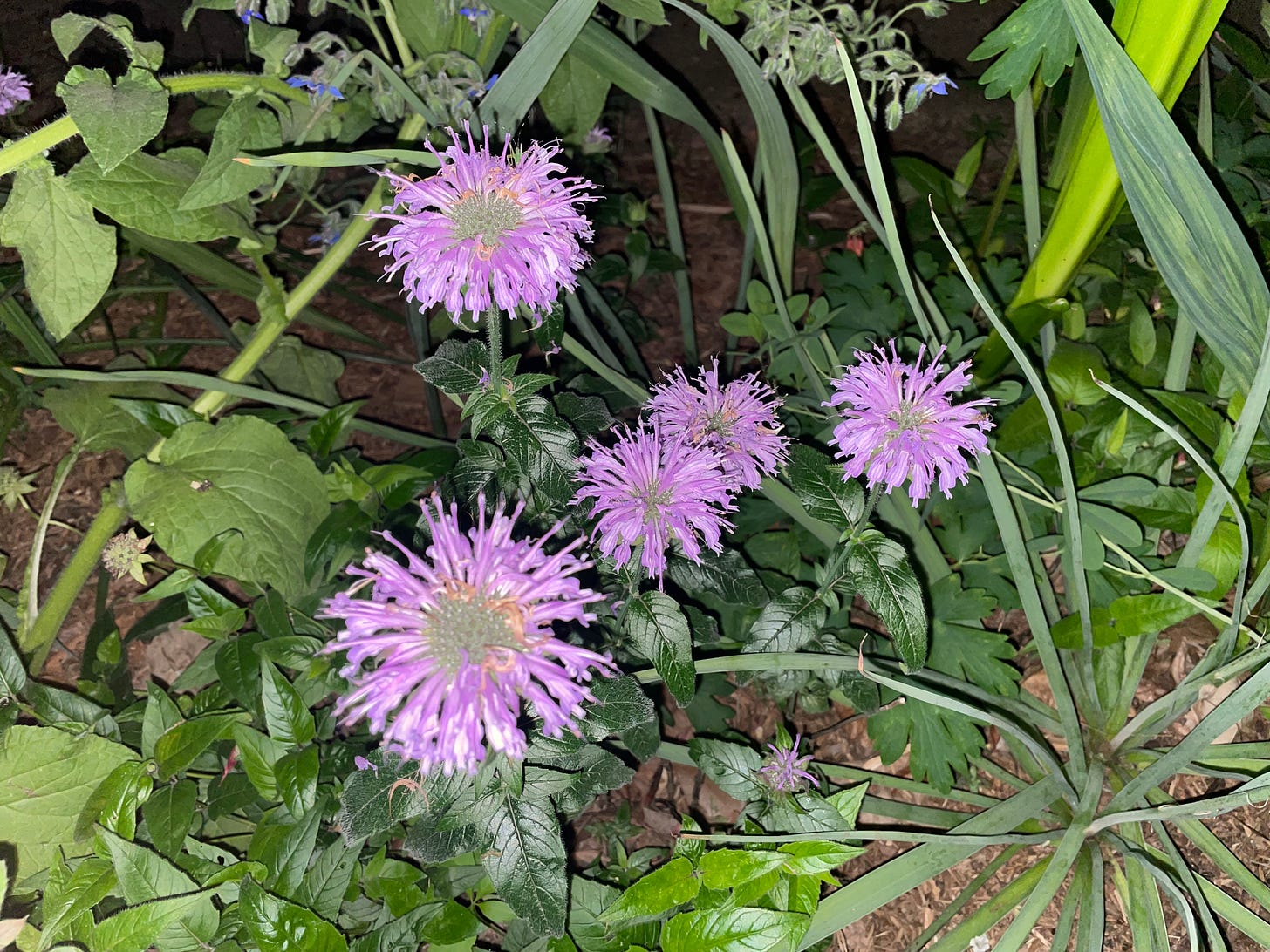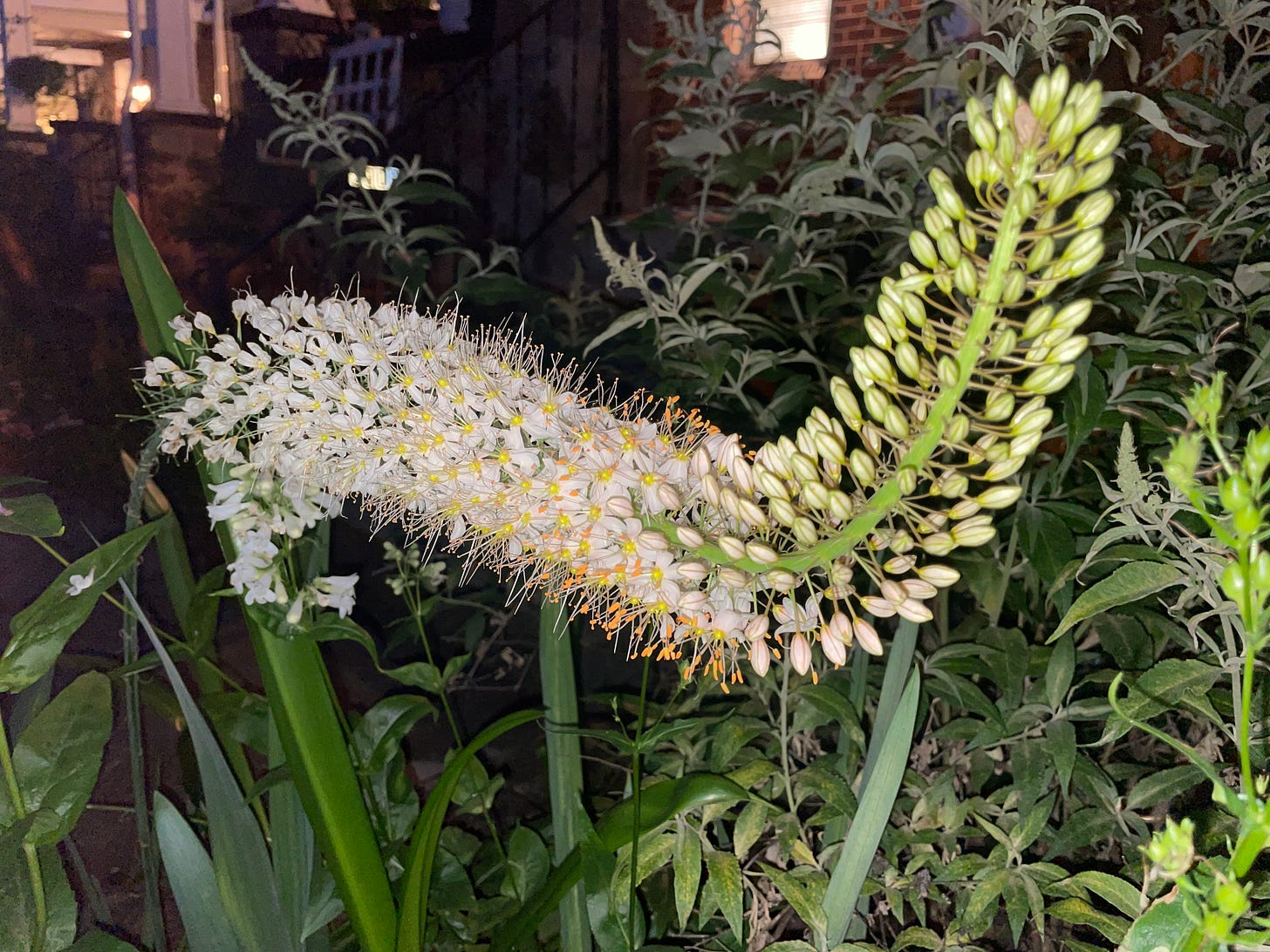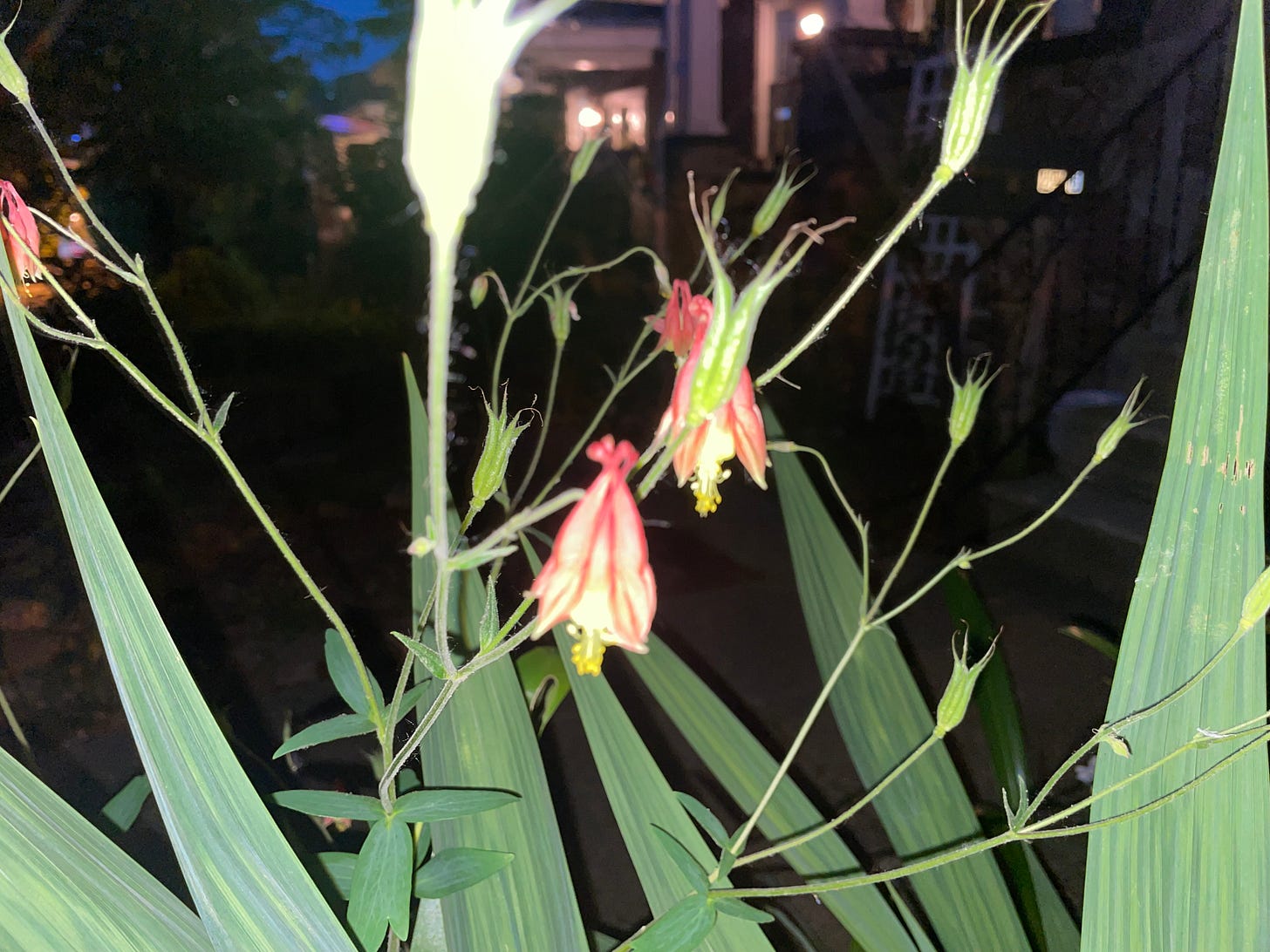Happy #1000wordsofsummer, friends! For the next two weeks, I’m going to try my best to write 1000 words every single day.
This is my first time participating in #1000wordsofsummer and it’s intimidating. I am rarely intimidated. I’m usually the one doing the intimidating, whether it be in a workplace as a woman boss person with opinions or whether it be on the playground at 9 years old and scaring all the boys away. BUT I DIGRESS!! (lol.) Writing 1000 words in one day is a lot for me, and it’s something I haven’t done a lot of. For me, this will likely mean a time commitment of 2-3 writing hours per day. But the “fear factor” here is telling me something important—it’s a new challenge and challenges are supposed to be, well, challenging.
Here’s the good news: I feel ready. The next two weeks on my personal and professional calendar are about as clean a slate as I could hope for. I’m not getting on a plane, or a train, or schlepping outside of my city of residence at all, which means I can commit to writing each morning and writing in the evening as well to round out my word count for the day if needed. I have two writing friends as accountability buddies. I’m feeling inspired as heck from my recent travels and revved up with lots of ideas from the 20 books I’ve read so far this year (a new record for me). I haven’t actively worked on my novel in months, so my goal for this writing sprint is to become reacquainted with the work, make some real story decisions, and just write.
To get started, I’m dusting off some scenes I wrote last fall. Rebecca Makkai’s substack, SubMakk, is probably my favorite substack for reading and learning about craft. Since it’s been awhile since I visited my story and I feel distant from it and my characters, I have decided to try the character development exercise Makkai details in her latest post, “The Highlighter Method.”
In the exercise, our job is to dig in on how different writers use language to describe the physicality of their characters without making it sound like a “police bulletin.” So I grabbed three books off my shelves and a pink pen (my highlighter was dried out, alas), and started underlining. I’ve copied key descriptive text below and bolded the bits that specifically highlight a physical description of a character.
I’ll start with William Gibson’s Neuromancer, which opens with a rich character description on the very first page.
Ratz was tending bar, his prosthetic arm jerking monotonously as he filled a tray of glasses with draft Kirin. He saw Case and smiled, his teeth a webwork of East European steel and brown decay. […]
“Wage was in here early, with two joeboys,” Ratz said, shoving a draft across the bar with his good hand. […]
The bartender’s smile widened. His ugliness was the stuff of legend. In an age of affordable beauty, there was something heraldic about his lack of it. The antique arm whined as he reached for another mug. It was a Russian military prosthesis, a seven-function force-feedback manipulator, cased in grubby pink plastic. “You are too much the artiste, Herr Case.” Ratz grunted; the sound served him as laughter. He scratched his overhang of white-shirted belly with the pink claw.
This description of Ratz the bartender, narrated in third-person, comes from Case’s point of view as he walks into a bar and interacts with Ratz. Why would Gibson spend three paragraphs within the opening two pages of his book describing a secondary character? Perhaps because the description of this character simultaneously does so much heavy-lifting on world-building. In the second paragraph, Gibson alludes that this bar, the Chat, is located in Japan but caters to “professional expatriates.” And then, Ratz’s dentistry is described as the handiwork of “East Europe” and his prosthetic arm as worn, whiny, and “grubby” Russian military-grade issue. Neuromancer was published in 1984, five years before the fall of the Berlin Wall. Even though this book is set in the future, Gibson references then-contemporary geopolitical realities as the foundation for dystopian world.
Let’s go to Octavia Butler’s Dawn next, in which the main character, Lilith, wakes up in captivity and interacts with an alien, a member of the Oankali, for the first time. This description takes place over the entire second chapter, so I’ll focus on the introductory portion.
The creature said nothing. It stood utterly still in its corner, and she new from her many Awakenings that it would not speak to her again until she did what it wished—until she said she was ready to look at it, then, in brighter light, took the obligatory look. These things, whatever they were, were incredibly good at waiting. She made this one wait for several minutes, and not only was it silent, it never moved a muscle. Discipline or physiology? […]
“All right,” she said. “Show me.”
The lights brightened as she had supposed they would, and what had seemed to be a tall, slender man was still humanoid, but it had no nose—no bulge, no nostrils—just flat, gray skin. It was gray all over—pale gray skin, darker gray hair on its head that grew down around its eyes and ears and its throat. There was so much hair across the eyes that she wondered how the creature could see. The long, profuse ear hair seemed to grow out of the ears as well as around them. Above, it joined the eye hair, and below and behind, it joined the head hair. The island of throat hair seemed to move slightly, and it occurred to her that might be where the creature breathed—a kind of natural tracheostomy.
Lilith glanced at the humanoid body, wondering how humanlike it really was. “I don’t mean any offense,” she said, “but are you male or female?”
I love Butler’s use of a close third-person narration for Lilith, which gives us access to Lilith’s internal monologue and her many questions about her captivity and her alien captors. As a reader, I also appreciate Butler’s direct and thorough description of the Oankali, which continues on for another page. When describing an alien for the first time—especially an alien race that will genetically merge with humans—Butler takes her time and is generous in her telling. She gives us a physical description, yes, but also sparks questions about their motives and their own interiority, their capacity for total stillness. And as this writer, and this book, are particularly interested in gender and sex, I love that the first question Lilith has upon clearly seeing her captor for the first time is whether it’s male or female, which signifies to the reader that the alien lacks any physical attributes that a human would recognize as explicitly gendered. Butler doesn’t hold her punches; she jumps right into the heart of it.
The last example I’ll share is a particularly interesting one. In Ursula K. Le Guin’s The Tombs of Atuan, the main character, Arha, is a young woman who was taken away from her family as a child and lives as a high priestess on an isolated island. She is master of a totally pitch-black, underground labyrinth, capable of navigating its tunnels by memory and touch alone. This is where she encounters the sorcerer Ged for the first time, which begs the question, how do you describe a character when they’re totally obscured by the dark?
Le Guin accomplishes this over nearly a chapter of storytelling as Arha and Ged interact with each other for the first time through an interplay of light and dark and multi-sensory cues. Arha slowly grasps additional trace information from his appearance and behavior that clues her—and the reader—into who he is. Towards the end of the chapter, we finally get a more direct description of Ged. Here are some key bits:
As she approached it down the slanting passage, a faint gray bloomed, a bare hint and glimmer, the echo of an echo of a distant light. […]
[…] the ancient darkness had been driven out by glory. Not bright, but dazzling to the dark-accustomed eye, was the light that worked this wonder. It was a soft gleam, like marshlight, that moved slowly across the cavern, striking a thousand scintillations from the jeweled roof and shifting a thousand fantastic shadows across the carven walls.
The light burned at the end of a staff of wood, smokeless, unconsuming. The staff was held by a human hand. Arha saw the face beside the light; the dark face: the face of a man. […]
Her ears told her no more than her eyes. But, as she stood with one hand on either side of the rock archway, she felt a faint, obscure vibration in the roc, and on the chill, stale air was the trace of a scent that did not belong there: the smell of the wild sage that grew on the desert hills, overhead, under the open sky.
Slow and quiet she moved down the corridor, following her nose.
After perhaps a hundred paces she heard him. He was almost as silent as she, but he was not so surefooted in the dark. […]
She started back, for a ray of light shot upward, straight into her face.
After a moment, very cautiously, she looked into the opening. She had forgotten that he carried that queer light on his staff. She had been expecting at most to hear him, down there in the dark. She had forgotten the light, but he was where she had expected him to be: right beneath the spy hole, at the iron door that blocked his escape from the Labyrinth.
He was standing there, one hand on his hip, the other holding out at an angle the wooden staff, as tall as he was, to the tip of which clung the soft will-o’-the-wisp. His head, which she looked down upon from some six feet above, was cocked a bit to the side. His clothes were those of any winter traveler or pilgrim, a short heavy cloak, a leather tunic, leggings of wool, laced sandals; there was a light pack on his back, a water bottle slung from it, a knife sheathed at his hip. He stood there still as a statue, easy and thoughtful.
Over the passing of seven pages, Le Guin keeps the tension and curiosity high for the reader as she only reveals what Arha can see of Ged. This tension is especially laudable as most readers of The Tombs of Atuan, the second book of Le Guin’s Earthsea series, will recognize the young wizard hero Ged from the first book of the series, A Wizard of Earthsea. Le Guin isn’t introducing readers to a new character; she’s re-introducing a beloved character to the reader, through the lens of a new main character, Arha.
Le Guin also makes the decision to introduce Ged at the halfway mark of the book, which does two things. First, it makes Tombs fully the story of Arha, giving readers plenty of time and reasons to build a relationship with someone wholly new in the Earthsea universe, making her the hero of this story. Second, it makes Ged’s arrival the catalyst for a change in the direction of the story. It’s a crossroads. It’s the start of the novel’s Second Act. Le Guin uses his description not just as the introduction of a secondary character, but as a completely unanticipated element in Arha’s closed-off world. For that reason, Le Guin’s dedication of an entire chapter to Ged’s reveal makes total sense.
What I’m writing
I used this character description exercise to revisit some of my own character descriptions. Here is where I started in describing a key secondary character, an Inuit woman who will be like a mother / auntie figure for my main character.
Jeannie was sitting on the front steps of her and Aunt Tess’ duplex that was close to the heart of campus. She was bundled in a black parka with a crown of gray fur that framed her heart-shaped face. A thick, black elastic headband pulled her dark hair off her forehead, which was tattooed with thin, dark lines that formed an upside-down triangle, one nested into the other. Tattooed pin pricks dotted her cheekbones. Silver earrings in the shape of whale fins hovered above her fur collar and wrinkles pulled at the corners of her almond-shaped eyes as she smiled. She stood up and she kissed Aunt Tess on the cheek before opening the door to their two-bedroom flat. No one, not even Aunt Tess, had told us that Jeannie was Inuk, the first we had ever met. Sam stopped talking for a whole minute to stare at Jeannie’s facial tattoos. I elbowed her and told her to cut it out.
What I notice upon my re-read is that the description of Jeannie is quite tight, confined to this one paragraph, and doesn’t extend into the rest of the text that follows. There is an opportunity to weave this description into the ensuing dialogue, so while the character able to make an impactful first impression, further details about her physical appearance and personality can be gathered by the main character in the following scene.
I have also chosen to write the story in first-person, past tense (although I waffle between this and third-person and am not sure where I’ll land), which is different from the three examples I shared previously which were all told in third-person. I find that first-person can be a little more limiting on the descriptive front; you’re seeing everything through the telling of one character and what they choose to remember, disclose, or withhold. I may try re-writing this description in third-person limited subjective POV as well to see if that shifts my approach.
What I’m reading
I started A Life of One's Own: Nine Women Writers Begin Again, as a source of inspiration for my #1000words challenge. Here’s a review from The New Yorker. If you’re feeling stuck, think you don’t have enough X, Y, Z writing experience, are too old to start your dream of becoming a writer, or worried your voice doesn’t matter, read this book. Excellent on audiobook and wonderful to listen to in snacky bites while on a walk or moving throughout your day. If you have Spotify Premium, it’s available to listen for free.
After finishing Kairos (see below), I started Siblings by Brigitte Reimann to keep the East German authors coming. Reading Y: The Last Man Book Three by Brian K. Vaughan (author), Pia Guerra (illustrator), and Jose Marzan (illustrator) when my brain is tired. Also have O Caledonia by Elspeth Barker, White Heat by M. J. McGrath, The Familiar by Leigh Bardugo, and a manuscript from a friend on the back burner.
I also discovered Ursula’s archived blog, in which her beloved cat, Pard, plays a starring role. I especially love this post about cats as anarchists.
What I read
Kairos by Jenny Erpenbeck. Woof. One of the best books I will read all year but a heavy read. This story about a toxic love affair between a young woman and a man 34 years her senior in East Berlin before the fall of the wall is the definition of the personal is political and the political is personal. Erpenbeck, who grew up in East Berlin, writes about the dissolution of East Germany in a way that feels claustrophobic, disorienting, heartbreaking. Erpenbeck avoids a simple, and perhaps more obvious, choice of making Katharina a metaphor for the “new” Berlin and her older lover, Hans, the symbol of the old. Both characters are East Berliners with different generational experiences of what that means. Hans grew up in the Hitler Youth, experienced life after the war, and the communist idealism that led to the creation of their world. Katharina has known nothing different.
Since coming back from Berlin, I’m interested in reading writing like this that explains why Berlin is the way it is; writing that conveys the generational transformations of the city, that captures the traumas of the people who have lived that experience. Erpenbeck definitely delivered, but the story drags in the middle and the physical and psychological abuse in their relationship is difficult to read. If you’re interested in learning more before committing, I recommend watching this YouTube review.
Cultish: The Language of Fanaticism by Amanda Montell. Didn’t learn a ton of new stuff and it felt a little thin. But as a writer and marketer, I was interested in Montell’s emphasis on the role of language in compelling people towards tribal, “us vs. them” behavior. Also appreciated her challenging of the concept of “brainwashing” and investigating material and systemic reasons people might join cults or cultish groups. Super fast read; listened to this on audiobook in a single weekend.
A helpful thing
When I was on a mini writing retreat earlier this year, I referenced a craft book they had on the shelves that was immensely helpful for me in my work of character development and considering point of view. I finally bought my own copy of By Cunning & Craft: Practical Wisdom for Fiction Writers by Peter Selgin and will be reading, underlining and referencing it heavily over the next two weeks.








